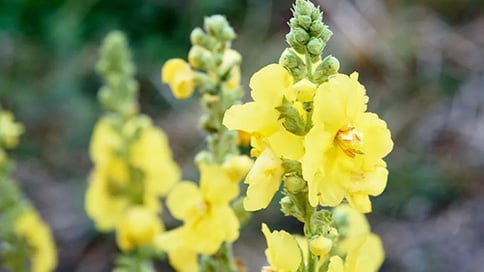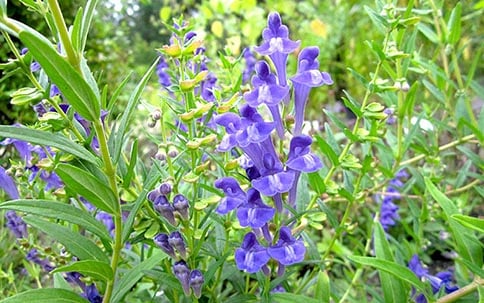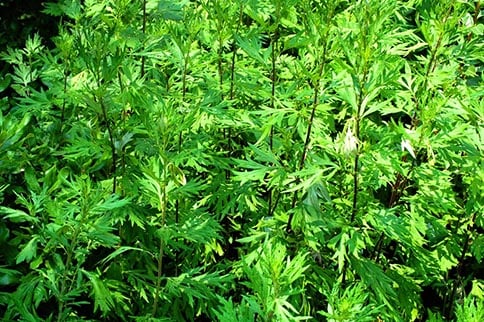7 Smokable Plants - Don't worry, it's totally legal

7 Smokable Plants - Don't worry, it's totally legal

Many plants may be safely enjoyed by smoking a pipe rollup. The ones listed below are legal, unregulated, and entirely safe for use.
Whatsmore they are non-hallucinogenic and non-addictive - perhaps that explains where they are not very popular?
While these plants won't give you a rush like nicotine or get you high, these herbs can produce a smooth, delicious smoke when blended in the following ways.
All of the below varieties can be purchased online shop or at any well-stocked herb store. You can also grow your own. Of course, you should always discuss any questions with your doctor.
While dozens of herbs can be smoked, the ones listed below are the most commonly used and easy to grow at home.
Verbascum thapsus/Mullein

Verbascum is a genus of more than 350 species of slowing plants. The common name is Mullein, part of the Scrophulariaceae family. It is native to Asia, Europe, and northern Africa and was probably introduced into North America around the 1700s. Mullin has been used in herbal medicine to treat everything from coughs to diarrhea and topical applications against various skin problems.;
Properties: Mullein has been used as a lung tonic for a long time. It can help you stop coughing when you're sick.
Smoking characteristics: The smoke is very light and mild, almost like smoking air, almost tasteless.
Plant type: This biennial grows two feet wide at the base, with flower stems six feet or more high.
How to grow it: Thought by many to be a garden weed, this plant with its fuzzy leaves grows easily from seeds planted directly in the garden in the spring. It prefers sunny places and well-drained soil that is not too fertile.
It benefits as a seedling from a bit of irrigation, but once established, is drought-tolerant.
Scutellaria/ Skullcap

Skullcap or sometimes skullcap is a common name for Scutellaria. This flowing plant is part of the mint family. Its name comes from the Latin word scutella, meaning "little dish."
This is because the flowers of this plant are shaped a bit like a small dish or bowl.
Properties: Smoking Skullcap often has a mild calming effect.
Smoking characteristics: This herb is medium smoke and has a fairly neutral taste.
Type of plant: A perennial growing about a foot tall, Scutellaria baicalensis makes an attractive ground cover in gardens.
How to grow it: Plant seeds indoors in the spring, and once the weather warms up, move the seedlings to a sunny or partially cool place with rich soil once. Skullcap needs weekly irrigation during drought. Cut dry foliage back to the ground each fall.
Tussilago farfara/Coltsfoot

Coltsfoot looks very similar to a dandelion, and the two can be hard to tell apart when in flower, but it's actually a member of the daisy family.
The name "Tussilago" comes from the Latin "Tutsis," which means "cough," and "ago," meaning "to act on." So it should be no surprise it has medicinal properties. When steeped as a herbal tea, it's said to help with respiratory infections, sore throats, flu, fever, and even gout.
Properties: Coltsfoot is an executor-dispeller that helps clear phlegm from the lungs.
Smoking characteristics: This herb is a light smoke with a neutral taste but can cause a violent cough if used in large amounts in a smoking mixture.
Type of plant: This 6 - to 12-inch tall ground cover spreads through underground rhizomes, forming extensive colonies under optimal growth conditions.
How to grow it: Dry butterbur seeds rarely germinate, but "fresh" seeds, as well as pot plants, are available online. Fertile, moist soil and sunny or partially shaded areas are the preferred growing conditions for this plant.
Artemesia Vulgaris/Mugwort

Native to northern Europe and Asia, Mugwort can also be found throughout North America and is a perennial plant in the Asteraceae family.
Mugwort is a calming herb that's been heavily used in spiritual rituals. Like Mullein, it's fluffy and light, making it a good base for a homemade smoking blend.
Properties: Many ancient cultures smoked Mugwort as a way to promote vivid dreams. It also produces mild hallucinogenic properties. The root of Mugwort has also been used as a tonic to boost energy.
Smoking characteristics: This herb is a light smoke with a slightly sweet and pleasant taste. Its been known to enhance and improve recollection of dreams.
Type of plant: Mugwort is a perennial that grows to 2 to 4 feet tall.
How to grow it: While seeds are available online, Mugwort is easier to start from a potted plant or transplant a clump from an established patch. Mugwort thrives effortlessly once established, but be warned: it can become invasive, especially in damp places. Cut the dry stems back to the ground each fall.
Arctostaphylos Uva-Ursi

Arctostaphylos uva-ursi is a plant species of the genus Arctostaphylos and is widely distributed across the northern hemisphere.
Arctostaphylos comes from the Greek, "arctos," which means "bear," and "Staphyle," which is "grape."
The Latin "Uva" means "a bunch of grapes," and "Ursus" is "bear."
Properties: Arctostaphylos is also known by the Algonquin name Kinnikinnick and bearberry. This plant has long been used by Native American tribes for ceremonial purposes. The leaves have also been widely used for treating urinary tract disease.
Smoking characteristics: UVA-Ursi herbs are moderately smoky with a strong earthy taste.
Type of plant: This attractive woody ground cover grows to about 6 inches tall and is a popular landscaping plant.
How to grow it: Uva-ursi can be difficult to propagate from seed, so it's best to obtain potted specimens from a local plant nursery or online vendor in your area. To grow in full sunlight or light; Good drainage is essential. The plant is drought-tolerant and requires little care once established.
Mentha spp/Mint

Menta or mint is a genus of plants from the Labiatae family. This also includes sage, thyme basil, rosemary, and other herbs you'd likely find in a well-stocked kitchen.
Properties: mint is often used to give flavor to smoking blends. There are many varieties worth trying, including Spearmint (Mentha spicata, Peppermint (Mentha piperita), and Chocolate Mint (Mentha x Piperita' Chocolate').
Mint's close relatives, including lemon balm (lemon flavored) and yerba buena (sweet mint flavored), are also often included in smoking mixtures.
Smoking characteristics: varies by species.
Type of plant: These perennial herbs spread under optimal growth conditions to form extensive colonies.
How to grow it: Mint is easier to grow from a pot plant than by seeding it or transplanting a clump from an established patch. Partial sunshine and rich, moist soil are preferred growing conditions. Peppermint can invade gardens, especially in wet areas, so you may need to limit them to pots. Cut the dry stems back to the ground each fall.
Sage/Salvia spp

Salvia is the largest of the plants in the sage family. The genus contains annual herbaceous perennials and shrubs. They are widely distributed through Asia, Central, and South America, as well as the Mediterranean.
Properties: Sage is mainly used to give flavor to smoking mixtures. There are many varieties worth trying, including white sage (Salvia Apiana), black sage (Salvia Mellifera), and pineapple sage (Salvia Elegans). But be warned: a species of sage, Salvia Divinorum, which has psychotropic effects, is illegal in many states (and many gardeners may find themselves accidentally breaking the law).
Smoking quality: varies by species.
Type of plant: Most salvias are perennial shrubs that vary in height from less than a foot to more than six feet.
How to grow it: Growing conditions vary from species to species, but most salvias prefer plenty of sunlight and dry conditions. Reduce them by about 50 percent each fall.
How to Blend Your Own Herbs for Smoking
- Smoking blends are essentially a matter of personal tastes and preferences. It is good to experiment with different herb combinations and see what best suits your tastes. However, here are some basics to get you started.
- Always harvest the freshest and young leaves. The best time to harvest them is in the morning after, just after all the dew has evaporated.
- The leaves should be dried slowly indoors. You can hang them in bundles from the ceiling, or you can use a window screen to spread them on when drying. Resist the temptation to dry them quickly in the oven, as this will dry them out too much, and you want to retain a bit of moisture for a smooth smoke.
- After you've dried the leaves, crush them by hand to an even consistency.
- Combine the leaves into a blend according to the steps below:
General Steps:
- The best base is Mullein, as it has a light, smooth smoke. Your blend should use about 50% of this in the mixture for a nice base.
- Once you have the base, select several other herbs to make the body of the blend. Skullcap and Mugwort will create a headier smoke while uva-ursi gives a more earthy tobacco-like quality. A little bit of coltsfoot can help if you get irritated lungs from tobacco smoke. The body should make up about 40 percent of the blend in total.
- The last 10% of the blend is used to add some extra flavor. This is where the different mints and sages can come in.
- If you find the blend is a little dry and harsh, you can spray a little water in or use some to keep it fresh with a little apple peel or berry leaves.
- It's best to keep your smoking blends in glass jars or resealable containers to prevent them from drying out.





